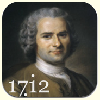



|
Rousseau Melody Notation

|

|
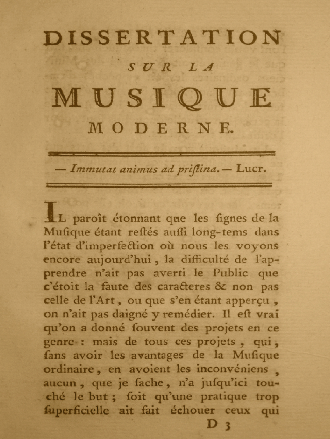 Make no mistake about it. Geneva-born philosopher Jean-Jacques Rousseau (1712-1778) was a master musician and composer. Many people haven't read or otherwise ignore his first published work entitled Dissertation sur la Musique Moderne (in french) in which he thoroughly explains numbered musical notation. This book was printed in Paris in 1743 and expands on material from his previous Project Regarding New Signs for Music (french with english translation) presented to the French Royal Academy of Sciences a year earlier. The Academy wrongly considered this work unoriginal, yet commended the young Rousseau for his effort and excellent presentation. There is no doubt that inventing and using numbered notation played an important role in his own musical education. Rousseau's progression from amateur to professional musician is very well documented and we are fortunate that he was extremely qualified to share his knowledge.
Make no mistake about it. Geneva-born philosopher Jean-Jacques Rousseau (1712-1778) was a master musician and composer. Many people haven't read or otherwise ignore his first published work entitled Dissertation sur la Musique Moderne (in french) in which he thoroughly explains numbered musical notation. This book was printed in Paris in 1743 and expands on material from his previous Project Regarding New Signs for Music (french with english translation) presented to the French Royal Academy of Sciences a year earlier. The Academy wrongly considered this work unoriginal, yet commended the young Rousseau for his effort and excellent presentation. There is no doubt that inventing and using numbered notation played an important role in his own musical education. Rousseau's progression from amateur to professional musician is very well documented and we are fortunate that he was extremely qualified to share his knowledge.
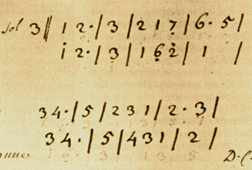 Original Rousseau manuscript. |
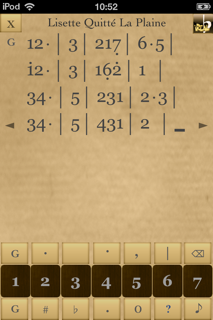
|
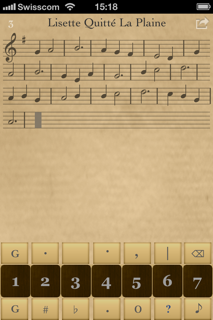
|
 and in the key of G :
and in the key of G :


G
63̇3 7̣66 366 76⋅ 
|
Eb
1, 1̇ 7̣ 56, 7 1̇ 1̣, 6 5 
|
C
1, 27̣ 1̇2, 7̣ 6663̇ 0 
|
C
6⋅7, 1̇⋅3 2 6̣ , 6⋅6̇ 6⋅6, 5⋅3 3,⋅6 
|
C
656 , 56⋅ ⋅6 , 56⋅ ↑1 656 , 56⋅ ⋅6 , 56⋅ 
|

|
|
× Erase/restore ◀ Move/play left ? Help screen |
♪ Text/note view |